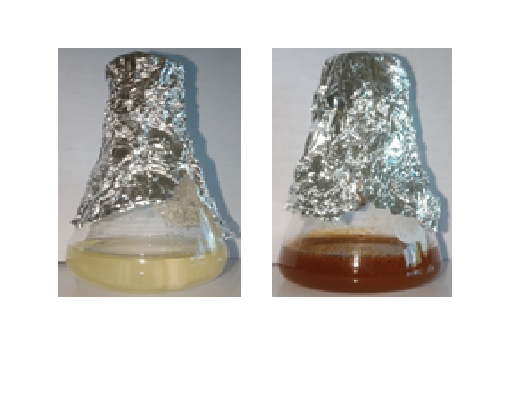Chemical Composition Oil and Ethanol Extract of Nutmeg Leaf and Antibacterial Test Against Staphylococcus aureus and Pseudomonas aeruginosa
Abstract
This study aims to determine the yield and composition of the essential oil and ethanol extract of nutmeg leaves and determine its antibacterial activity against Staphylococcus aureus and Pseudomonas aeruginosa bacteria. Nutmeg leaf oil was obtained by isolation using steam-water distillation and extraction methods using maceration with ethanol as solvent. The moisture content of nutmeg leaves is 11.11%. From the distillation method, 0.26% nutmeg oil was obtained, while the yield of nutmeg oil was 29.01% from the extraction method. Gas Chromatography-Mass Spectrometer analysis showed that distilled nutmeg oil contains 20 components with the main composition, namely myristicin (15.92%), b-phellandrene (14.35%), limonene (11.20%), b-pinene (10.81%), and a-pinene (8.59%). The ethanol extract of nutmeg leaf contains 37 components with the main composition being myristicin (7.64%), 1,1,3,3,5,5,7,7,9,9,11,11,13,13-tetradecamethylheptasiloxane (7.14%), 2,2-dimethyl-1-decanol (7.12%), bis(2-ethylhexyl) phthalate (5.55%), and 9-dodecane-1-al (4.63%). The antibacterial activity test of nutmeg oil was carried out using the good diffusion method. The inhibitory power of nutmeg oil and ethanol extract of nutmeg leaves against S. aureus bacteria were 20.31 mm and 23.56 mm, while against P. aeruginosa bacteria were 11.79 mm and 8.86 mm, respectively.
Downloads

Copyright (c) 2022 Fensia Analda Souhoka, Imanuel Berly Delvis Kapelle, Ainun Maharani Walla

This work is licensed under a Creative Commons Attribution-NonCommercial-NoDerivatives 4.0 International License.
Authors who publish with this journal agree to the following terms:
- Copyright on any article is retained by the author(s).
- The author grants the journal, the right of first publication with the work simultaneously licensed under a Creative Commons Attribution License that allows others to share the work with an acknowledgment of the work’s authorship and initial publication in this journal.
- Authors are able to enter into separate, additional contractual arrangements for the non-exclusive distribution of the journal’s published version of the work (e.g., post it to an institutional repository or publish it in a book), with an acknowledgment of its initial publication in this journal.
- Authors are permitted and encouraged to post their work online (e.g., in institutional repositories or on their website) prior to and during the submission process, as it can lead to productive exchanges, as well as earlier and greater citation of published work.
- The article and any associated published material is distributed under the Creative Commons Attribution-NonCommercial-NoDerivatives 4.0 International License.





_copy1.png)










